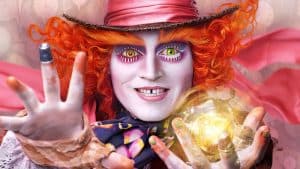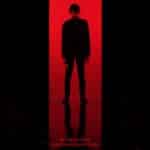
Alice Through the Looking Glass
After a long time spent aboard the ship Wonderland, Captain Alice Kingsleigh back on dry land in London, stiff and dull.
Alice, ever beautiful Mia Wasikowska, will soon leave the boredom of aristocratic world for a new adventure. Through a magic mirror, with the help of Caterpillar, he will return from his friends of the Underworld, this time to save the Mad Hatter (Johnny Depp) and time travel.
The sequel to Alice in Wonderland by Tim Burton, here as producer, sees our protagonist faces a real odyssey of space and time in which the time is personified (Sacha Baron Cohen) will be his enemy-friend from which to draw teaching and to teach something. Because yes, the James Bobin movie is just chronos priority subject in person, the item from the dual nature, and precious tyrant, cynical and friendly, as is precisely the character played brilliantly by Baron Cohen.
Unlike the novel by Lewis Carroll (Through the Looking-Glass) playing around on the subject of chess, here this theme is lightly touched in favor of a more simplistic morality, or what you can learn from the time, from the mistakes or from past experiences. Alice, to rescue the Hatter who is slowly letting die, must recover chronosphere and travel through time to try to change some events and save the family of his friend. After meeting with the comrades of Underland, the White Queen (Anne Hathaway), the White Rabbit, and Pincopanco Pancopinco, Bayard and so on, the girl decides to undertake this venture that will bring back the presence of the wicked Red Queen, even in this episode played by Helena Bonham Carter.
Alice through the looking glass is the film in which the characters in this fantasy world are visibly humanized: the grip is always family. The home environment is the locus (not always) amoenus which created joy and pain, changes and transformations, but it would always be a point towards which to strive. Even the Red Queen, not quite so bad, seems to have a score to settle right in to what happened in the home.
The leitmotif of the psychedelic trip, very present in the animated 1951, and certainly visionary pivotal element of the work of Lewis Carroll film, is completely abandoned, which happened with the previous Burton – thankfully we saved the movie here fights with dragons. Not enough bizarre and brightly colored clothes to recreate the LSD atmosphere.
Alice’s journey becomes trivially growth when once again triumph the good feelings and you drift away from the intention Carrollian mental understanding of the universe through dreams and imagination. Despite talk of time travel and temporal short circuits, the main theme is not enough to recreate the dreamlike and hallucinatory atmosphere. Here the doors of perception are narrowed and things appear as they really are not infinite, but portrayed with tolerance and banality.
https://www.youtube.com/watch?v=ynt9lWQG8uQ








